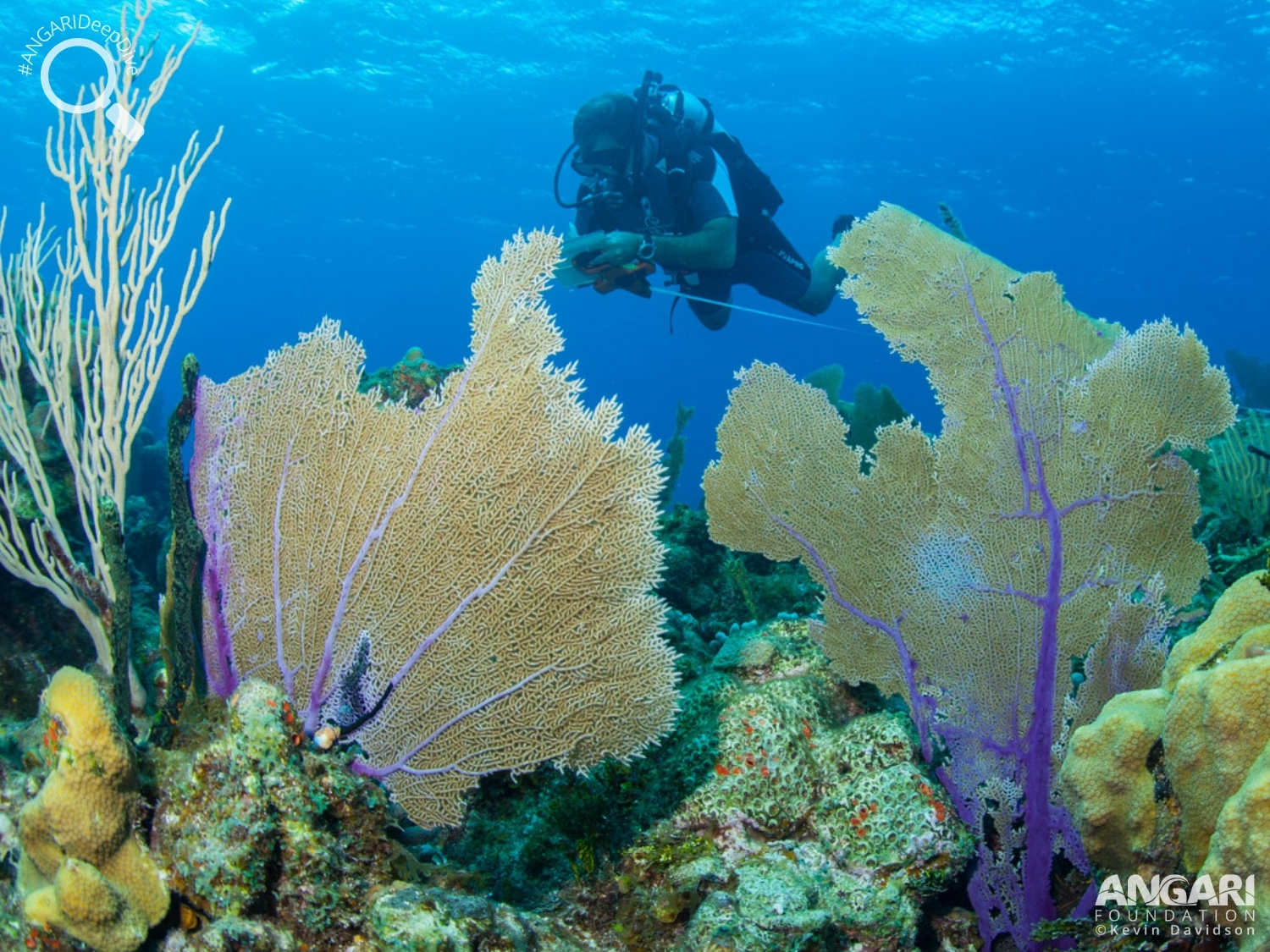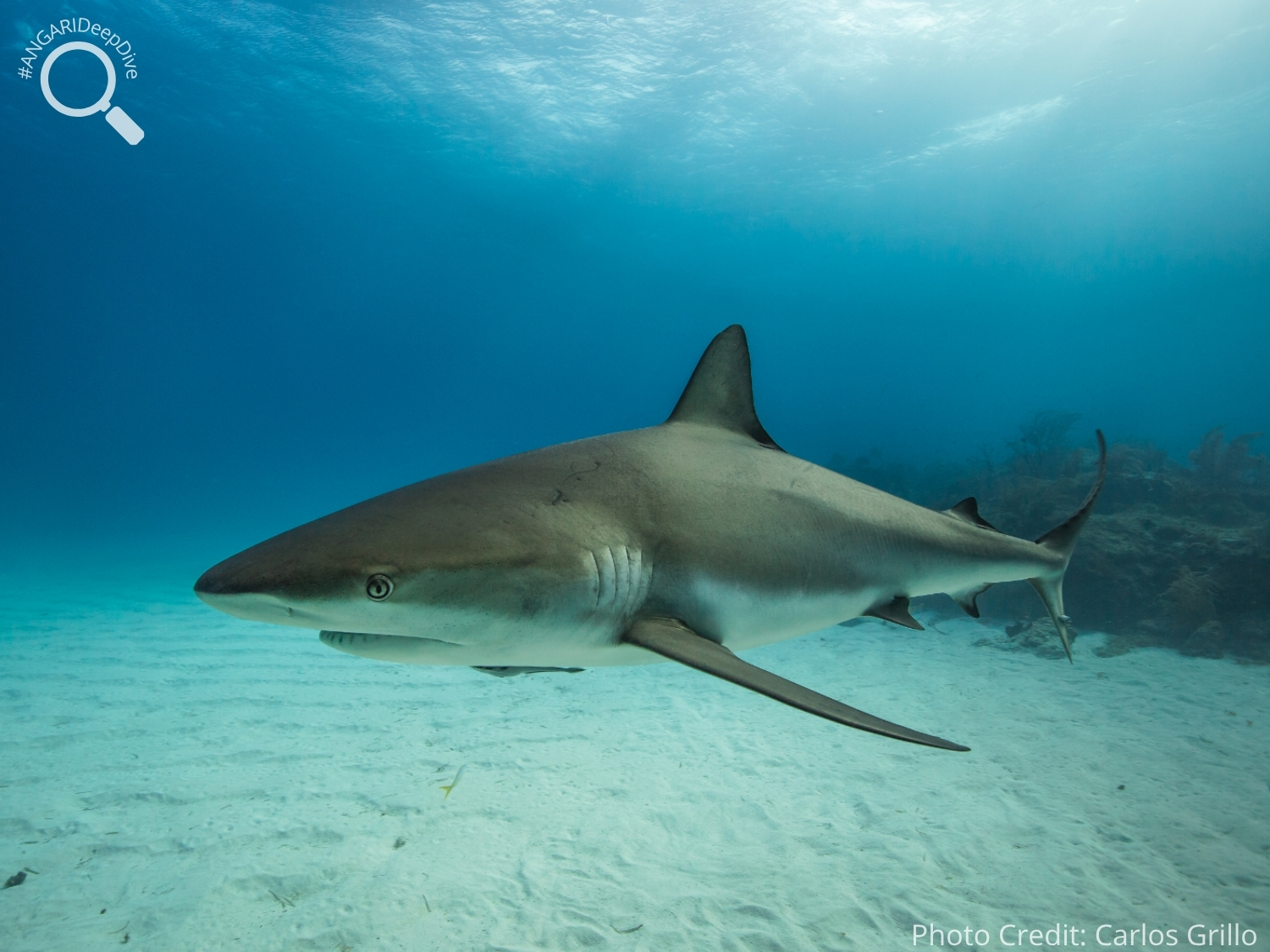Gray angelfish are found on coral reefs in the western Atlantic Ocean and can be identified by their shiny gray body with yellow pectoral fins.
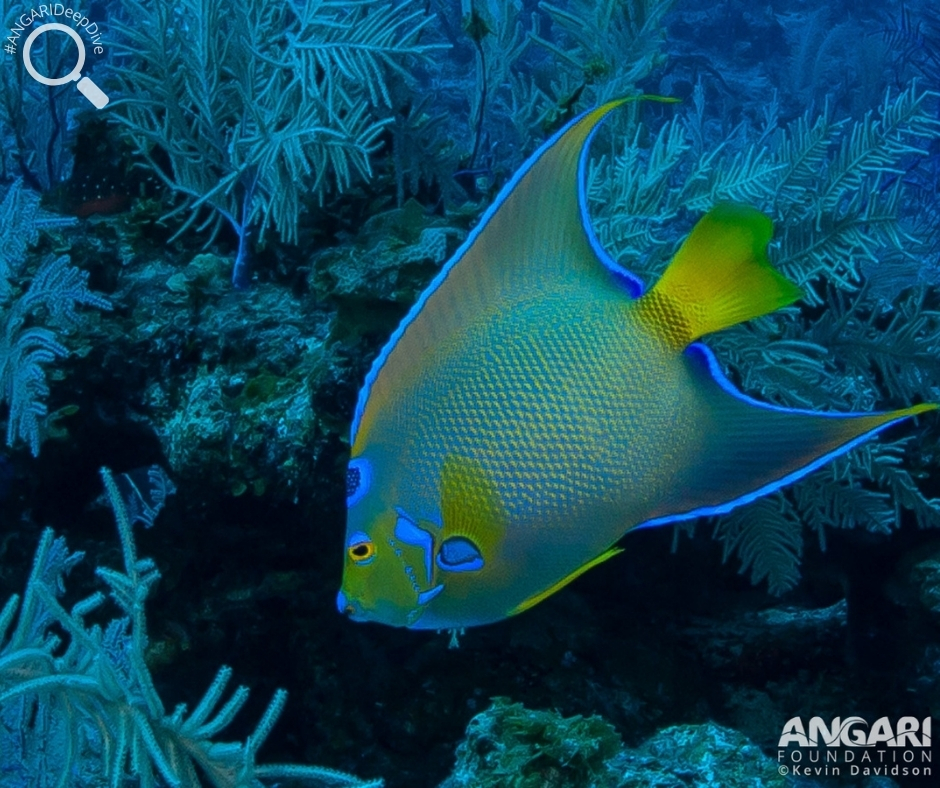
Queen Angelfish (Holacanthus ciliaris)
The queen angelfish (Holacanthus ciliaris) is a species of angelfish with a very regal name. This angelfish species has beautiful and vibrant coloring that allows it to successfully blend in with colorful reefs and be protected from predators. Though typically shy and solitary creatures, they are occasionally curious and will observe divers! Dive into more queen angelfish facts below.
#1: Where do queen angelfish get their regal name from?
Queen angelfish have a speckled, blue-ringed black spot on their heads. This looks remarkably like a crown and the main reason that they have the name that they do.

#2: Where can you find queen angelfish?
Queen angelfish are a tropical fish that are typically found in coral reefs in the western Atlantic Ocean. They do not migrate, and are commonly found in The Bahamas and near Florida. Some are even found as far south as Brazil!
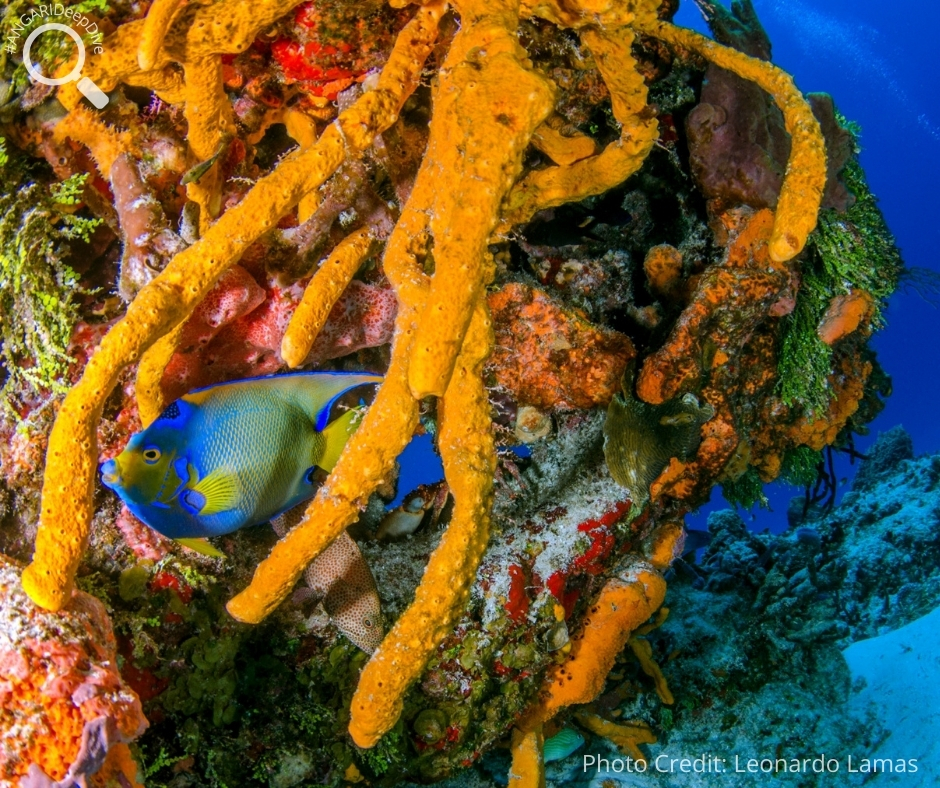
#3: Queen angelfish can be shy!
Queen angelfish are a solitary species and are often found alone, but can occasionally be found in pairs. Though shy creatures, queen angelfish are occasionally curious and often observe divers from a distance.

#4: Does the coloring of a queen angelfish benefit them?
Queen angelfish have a striking array of colors on them including electric blue, vibrant yellows, purples and oranges, and are one of the most distinctly colored reef fishes. Though their colors seem very noticeable, queen angelfish use their coloring to blend into the reef which help them hide from predators.
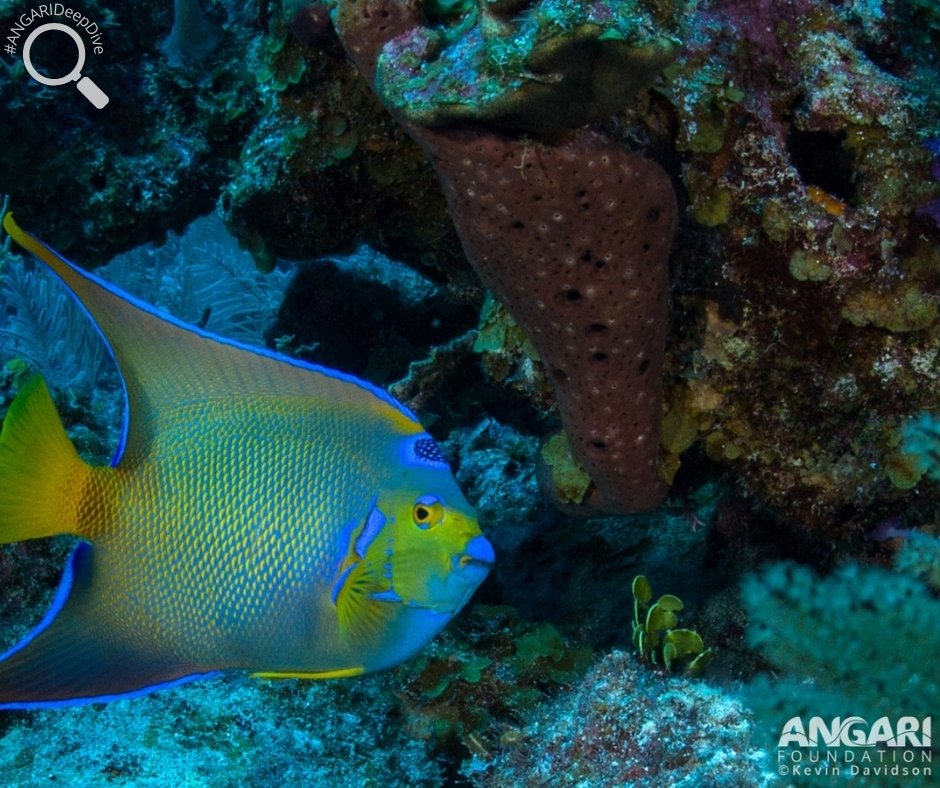
#5: Are juvenile queen angelfish
Juveniles do not have the same coloring or patterns as the adult queen angelfish. They are dark blue with a yellow tail, a yellow segment around the pectoral fins and beautiful vertical blue bars on the body. As the juveniles become larger, their color gradually changes until they achieve their adult coloration.
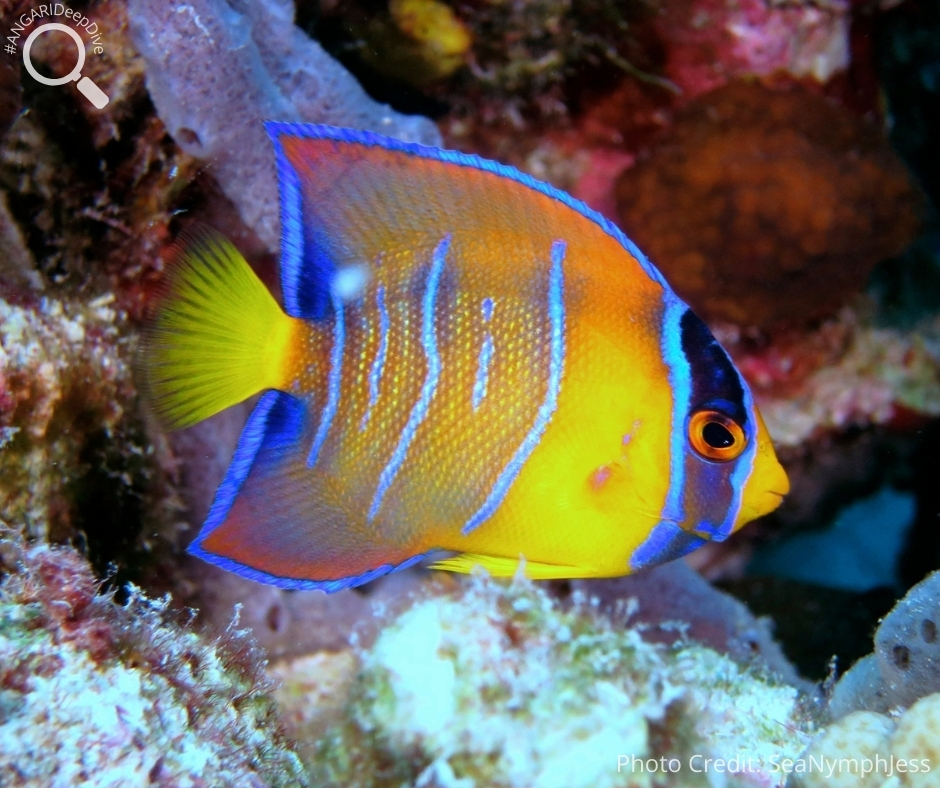
#6: What do queen angelfish eat?
Queen angelfish are foragers and feed on a variety of marine invertebrates, such as sponges, corals and jellyfish, as well as algae and plankton. Juveniles feed by creating “cleaning stations”, where they pick parasites off of larger fish on the reef.

#7: Are the queen angelfish related to another fish species?
Queen angelfish are very closely related to blue angelfish. In fact, these two species have been know to mate, producing natural hybrids, which is a very rare event among angelfish. Their offspring share the colorings of both fish species.

#8: Did you know that queen angelfish reproduce by broadcast spawning?
Queen angelfish reproduce through broadcast spawning, where females release their eggs and males release gametes into the water column at the same time. This method of reproduction increases the chances that eggs will become fertilized and that fertilized eggs will not be eaten by reef inhabitants. During a female’s lifetime, she will produce tens of millions of eggs.

Queen angelfish are not fished commercially, but are captured alive for public displays and aquariums because of their beautiful vibrant colors. Scientists do not believe that the capture of queen angelfish for aquariums and displays has significantly impacted their population, but there are areas of population depletion. Though the IUCN lists queen angelfish as of least concern for risk of extinction, this species still plays a vital role in the reef ecosystem as they help regulate sponge and coral populations and prevent them from overwhelming the reefs for space. We can ensure we help this species by using reef safe products, not damaging reefs and educating others!
Additional Queen Angelfish Resources:
1. Queen Angelfish – Florida Museum
2. Queen Angelfish, Holacanthus ciliaris – Oceana
3. Holacanthus ciliaris (Queen Angelfish) – The Online Guide to the Animals of Trinidad and Tobago


